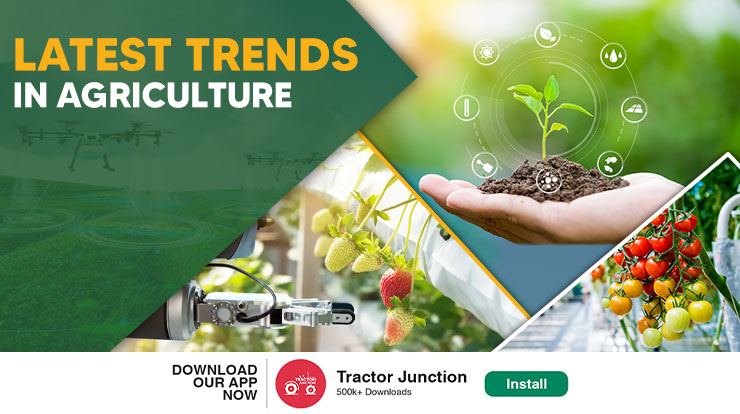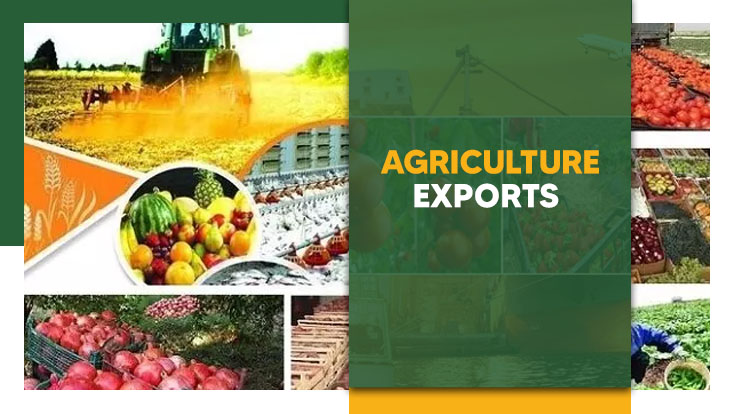
Agriculture – the most important sector for any country. Similarly, agriculture has special importance in India. It is an economy based sector that involves more than half the population of the country. We can say that agriculture is the backbone of India. Our livelihood completely depends on it. Therefore, Indian agriculture and Indian farmers both are essential in every manner. For the same, the Indian government and Indian peoples take many steps to help them and the sector’s growth. As a result, today, agriculture has become an emerging sector with the latest trends. Emerging Trends in Agriculture are major reasons for the sector’s growth.
Emerging trends in agriculture mean new technologies and new strategies which become higher with time. For the last several decades, the agriculture sector has been undergoing new changes, and at the same time, new technologies have also expanded in this sector. Due to all these things, the sector is growing. The recent development in agriculture makes agriculture activities more suitable and comfortable for farmers. These changes or trends help not only in agriculture growth but also farmer’s conditions.
“The beauty of agriculture is that it is a culture farmer.”
Emerging Trends In Agriculture
Indian agriculture production has increased with time due to the latest trends in India. It has made us self-reliant and prevented us from becoming a begging bowl for food as a net exporter of agriculture and other products after independence. As per the Second Advance Estimates for 2019-20, the total country’s foodgrain production is estimated to be a record 291.95 million tonnes. It is good news, but the Indian Council of Agricultural Research (ICAR) forecasts that the demand for food grains will increase to 345 million tonnes by 2030. These all things are happening because of agriculture trends. Recent trends in Indian agriculture means new technologies and developments in recent years in the agriculture sector.
If you want to know about these Emerging Trends in Indian Agriculture, keep with this blog until the end.
This blog helps you to understand agriculture and the latest trends in agriculture. So, without wasting time, we start the blog.
1. Increase Food Production
Indian agriculture has seen a dramatic increase in food production since introducing new technologies like the Green Revolution in agriculture practices. An annual growth rate of 2.08% was recorded during the 1970s. An annual growth rate of 3.5% was recorded in food grains in 1980. These growth rates in food grains is a hallmark of the Green Revolution which enabled India to become self-sufficient in food grains and even a marginal exporter.
The annual growth rate has fallen to 1.7% in the 1990s, almost equal to the annual population growth. As the decade of the 1990s couldn’t maintain this pace. The total production of food grains has increased from 176.39 million tonnes in 1990-91 to 233.9 million tonnes in 2008-09. With the increase in population size and increase in income, the demand for food grains is likely to increase in the near future.
As per the latest estimate of 2010, food grains demand is likely to increase at 2.6%. So, if India can maintain a 4% growth rate in agriculture production, then after meeting the domestic market demand, the country can export excess food grain to foreign countries.
2. Agricultural Diversification

Agriculture not only completes the demand for food grains, but it is also fulfilling other development needs. In recent years, the farming industry has been diversified to produce commercial and horticultural crops such as fruits, vegetables, spices, cashew, areca nut, coconut and flour products such as flowers, orchids, dairy, animal husbandry and products.
The demand for these products is also increasing. The liberalization of the economy has created ample scope for the development of the agricultural sector in terms of growth in both production and trade.
3. Emerging Trend in Horticulture Production

India is considered the largest producer of fruits and the second-largest vegetable producer. The diversity of geographical, climatic and soil features enables India to grow a large variety of horticultural crops, including fruits, vegetables, spices, cashew, coconut, cocoa, areca nut, root and tuber crops, medicinal and aromatic plants etc.
The total production of fruits has increased from 29.0 million tonnes in 1990-91 to 63.5 million tonnes in 2007-08. The total production of vegetables has raised from 67.29 million tonnes in 1994-95 to 125.9 million tonnes in 2007-08. India is known as the largest producer of cashew nuts. The total production of cashew has increased from 3.7 lakh tonnes in 1991-92 to 6.0 lakh tonnes in 2003-04.
4. Raise in Floricultural Output
 Presently, flowers are grown in about 31,000 hectares of land spread over Karnataka, Tamil Nadu, Andhra Pradesh and West Bengal. However, since the establishment of liberalization, commercial cultivation of floriculture has been gradually increasing. As a result, the demand for Indian cut flowers is growing continuously in the international market.
Presently, flowers are grown in about 31,000 hectares of land spread over Karnataka, Tamil Nadu, Andhra Pradesh and West Bengal. However, since the establishment of liberalization, commercial cultivation of floriculture has been gradually increasing. As a result, the demand for Indian cut flowers is growing continuously in the international market.
The total amount of export of cut flowers has increased from Rs. 28.7 crore in 1994-95. 96.6 crore in 1998-99. Under the liberalized regime, India has enormous potential to export floriculture products in the near future, expected to exceed the Rs. 200 crore figure by 2010. The flower’s total production during 2007-08 was 0.87 million tonnes of loose flowers and 803.5 million tonnes of cut flowers.
5. Free Trade

Liberalization has removed all restrictions on the movement of agricultural produce within the country. It has helped in the expansion of trade in agricultural products, especially food grains.
6. Agriculture Exports

India is the biggest exporter of agricultural products. Hence, it is one of the important emerging trends in agricultural marketing under liberalization. Due to the deregulation, the volume of agricultural exports is growing under the WTO’s rule and its growth prospects in the near future. India is in a favourable position in terms of agricultural exports as the agriculture sector is subject to low import material, low cost of labour, good climatic conditions and low unit cost of inputs.
Agriculture exports play a very important role in the growth of the agriculture sector. Also, it is increasing the number of employment opportunities and diversifying agricultural operations.
7. Developing New Biological Techniques

During the Green Revolution, the increased application of chemical fertilizers and pesticides was encouraged on a large scale to meet the growing demand for the food needed to feed the increasing population. Increasing population, the ever-increasing demand for food and unlimited exploitation of natural resources has posed a severe threat to the environment and the agriculture sector.
In order to avoid further damage to the environment and the agriculture sector, there is an increasing emphasis on the use of biological technology for agricultural operations, and more emphasis is being laid on developing new organic technology.
These are recent trends in agriculture that increase agricultural production and improve the condition of the sector. Also, these trends help to improve employment as well as farmer’s conditions. In addition, they make future agriculture in India brighter and more successful.
Recent Developments In Agriculture

We hope you liked the blog and are happy to read this informative matter. For more such informative blogs, stay tuned with Tractor Junction.
Recent Blog
Top 10 Agriculture Business Ideas
Types Of Smart Sensors In Agriculture For Farming


